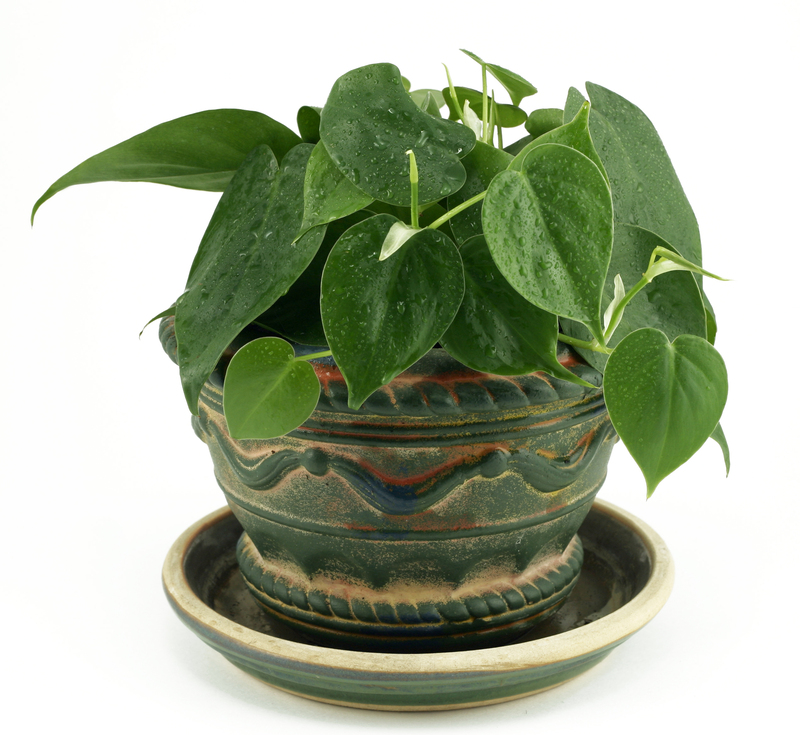Transforming Dark Corners with Evergreen Climbing Plants
Posted on 15/05/2025
Transforming Dark Corners with Evergreen Climbing Plants
Dark corners in your garden or around your home can often appear neglected, uninviting, and underutilized. However, they present a golden opportunity for creativity and transformation. One of the most effective solutions to breathe life into these spaces is by using evergreen climbing plants. These plants not only add a lush texture and color but also offer year-round vibrancy. Let's explore how you can convert these uninspiring corners into captivating spots with these versatile climbers.
The Benefits of Using Evergreen Climbers
Evergreen climbing plants are a gardener's ally when it comes to designing landscapes and gardens. Here are some key benefits:
- All-Year Appeal: Unlike deciduous climbers, evergreens maintain their foliage throughout the year, ensuring that your dark corners remain vibrant even in winter.
- Space Optimization: By growing vertically, these plants maximize your use of space, which can be particularly useful in small gardens or urban environments.
- Low Maintenance: Most evergreen climbers are hardy, requiring minimal upkeep once established.
- Environmental Benefits: They can improve air quality, provide insulation, and offer habitats for wildlife.
Selecting the Right Evergreen Climbers
Before planting, it's essential to choose the right climbers suitable for shady conditions. Below are some recommended evergreen plants that thrive in low-light environments:
Ivy (Hedera helix)
Ivy is a classic choice known for its adaptability and rapid growth. With its lustrous green leaves, it can add a mystical charm to any dark corner. Its ability to grow in poorly lit areas makes it an ideal candidate for transforming drab spaces.
Climbing Hydrangea (Hydrangea anomala subsp. petiolaris)
This beautiful climber is perfect for shaded walls and fences. The climbing hydrangea features heart-shaped leaves and intricate white flowers in summer, offering a striking contrast against shaded backgrounds.
Star Jasmine (Trachelospermum jasminoides)
For a touch of fragrance and elegance, the star jasmine is unbeatable. With lush foliage and fragrant white flowers, it thrives in partial shade and adds a refreshing aroma to any dark area.
Installation and Care Tips
Once you've selected your plants, proper installation and care are crucial for ensuring their success. Here are some tips to get you started:
- Prepare the Soil: Enrich the soil with organic matter to provide your climbers with a nourishing start.
- Support Structures: Install trellises, wires, or frames before planting to guide their growth direction.
- Regular Pruning: Trim the plants regularly to encourage growth and maintain shape, preventing them from becoming unruly.
- Watering: Ensure consistent watering, especially during dry spells, to keep the plants healthy and vibrant.
Creative Ideas for Utilizing Evergreen Climbers
With your climbers in place, the possibilities for creative design are endless. Here are some ideas to elevate your dark corners:
Vertical Gardens
Utilize trailing plants to create vertical gardens that add layers of texture and color to bland walls. This can transform any vertical surface into a vibrant canvas.
Arches and Pergolas
The allure of a climber-covered arch or pergola cannot be overstated. These structures, dressed in dense foliage, can serve as focal points and add depth to your garden design.
Living Walls
Transform fence panels into living walls by allowing climbers to envelop them fully. This not only increases privacy but adds an element of surprise and lushness.
Common Challenges and Solutions
While evergreen climbers are versatile, they can pose some challenges. Here are common issues and how to address them:
- Pests and Diseases: Keep an eye out for common pests such as aphids. Organic insecticides or manual removal can help.
- Overgrowth: Regular pruning will prevent the climbers from becoming invasive.
- Soil Drainage: Ensure good drainage as waterlogged soil can harm plant roots.
- Lighting: While these plants thrive in low light, some may need partial sun for optimal growth. Assess the lighting conditions and adjust accordingly.
Conclusion: Embracing the Potential of Evergreen Climbers
With a thoughtful selection and strategic placement, evergreen climbing plants can turn neglected dark corners into lively, inviting spaces. These plants' natural ability to adapt, combined with their aesthetic appeal, make them indispensable elements of garden design. Whether you're a seasoned gardener or a beginner, utilizing these hardy climbers can significantly enhance the beauty and functionality of your outdoor spaces, creating a sanctuary that exudes life and charm all year round.





